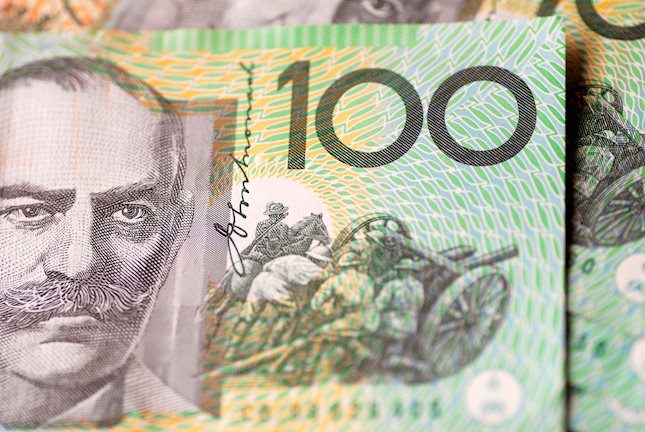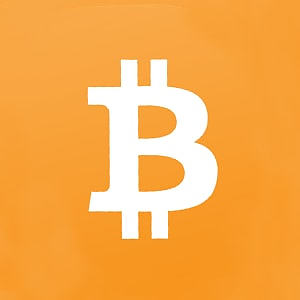In focus today
From the US, ADP's private sector employment report for December will be released in the afternoon, and FOMC's December minutes are due for release in the evening. The former will give early hints of what to expect from Friday's key Jobs Report, while markets will keep a close eye on the latter for details on discussions that led to the hawkish stance at the meeting.
Today, focus is on German industrial production data for November - in which the trend has been declining in previous releases.
At 08:00 CET we will get the Swedish flash inflation estimates for December. We see CPIF at 1.7% y/y and CPIF ex energy at 2.3 % y/y. This is 0.2 pp. below and 0.1 pp. above Riksbank's forecasts. This month all core price components are expected to have contributed positively to inflation.
Economic and market news
What happened overnight
On the political front, incoming US President Donald Trump reiterated that he would not rule out any economic or military action to gain control of the Panama Canal and Greenland. With Denmark resisting his offer to acquire Greenland, Trump, also, for the first time, threatened to impose tariffs on Denmark. Yesterday Donald Trump Jr. visited Greenland.
What happened yesterday
In the US, the ISM services for December was stronger than expected at 54.1 (cons: 53.3, prior: 52.1). The uptick is largely attributed to the services priced paid sub-index, which increased to 64.4 from 58.2 - its highest level since February 2023. However, it is worth mentioning that the similar PMI index has been declining, suggesting mixed signals from the ISM print. Business activity climbed higher, though other sub-components were little changed.
Akin to the ISM data, the JOLTs report for November was a bit mixed. While job openings were higher than expected, printing 8.1m (cons: 7.7m) - the highest since last May, hiring slowed down coupled with involuntary layoffs crawling slightly higher. Suffice it to say, the report painted a picture of labour demand at healthy levels. Coupling both data releases, the rather hawkish market reaction with a stronger USD and USD rates trending higher is natural.
In the euro area, HICP inflation for December ticked up to 2.4% y/y as widely expected, mainly due to base effects on energy inflation, while core inflation stayed at 2.7% y/y. Looking at monthly data, core services inflation was on the high side, increasing 0.30% m/m SA. However, this also comes after a very low print in November, indicating that momentum remains broadly unchanged. Core goods inflation stayed very low in December like the previous many months and food inflation now declined again. All in all, data shows that the disinflationary trend in underlying inflation continued in December, which is positive for the ECB in their effort to bring down inflation. Going forward, we expect headline inflation to decline in Q1 2025 - and at the same time we project that base effects on services prices will also pull core inflation lower combined.
Turning to labour markets, the unemployment rate remained at its historically low level of 6.3% in November - attributed to a decline in the number of unemployed persons by 40k to the lowest number ever recorded. Combined with rising employment in Q3 the hard data thus continues to show a resilient labour market in the euro area in contrast to softening survey indicators.
In Switzerland, inflation for December printed broadly in line with expectations, aligning with the SNB's Q4 2024 forecast of 0.7% y/y. Headline was 0.6% y/y (cons: 0.6%, prior: 0.7%), while core was 0.7% y/y (cons: 0.8%, prior: 0.9%). The monthly momentum in seasonally adjusted terms showed further easing at 0.07% in headline and 0.05% in core with disinflation in the domestic components. While this should set the scene for the SNB delivering another cut in March, as we and markets expect, there are still two inflation reports before the meeting on 20 March. We remain positive on the CHF amid a backdrop of narrowing rate differentials to the ECB and fundamentals.
Equities: Global equities declined yesterday as US equities fell, dragging down global indices. Consequently, there was notable outperformance in Europe. Mainstream financial media seem to be attributing the downturn to macroeconomic data, particularly inflation-related figures, as yields continued to rise. This assessment is perhaps fair, as we noted this phenomenon yesterday. However, a strong set of macroeconomic data, even with a slightly high price component in the ISM Non-Manufacturing Survey, should still be viewed positively.
When markets are exuberant, and we are reminded of a challenge we've recently faced, such as inflation, it often leads to profit-taking. This is also why we did not see the typical yield-sensitive sectors losing the most yesterday, but rather the growth and tech sectors, which have been recent winners, being the losers yesterday. In the US yesterday, the Dow was down 0.6%, S&P 500 fell by 1.2%, Nasdaq decreased by 1.9%, and Russell 2000 dropped by 1.1%. This morning, most Asian markets are lower, along with European futures, although US futures are higher.
FI: The European inflation print did not leave clues for the near-term policy outlook where ECB is set to deliver a 25bp rate cut at the meeting later this month, and thus rates traded sideways in the morning. Markets are pricing roughly 100bp worth of ECB rate cuts this year. Better than anticipated US data, with JOLTS and ISM services beating expectations, led to a US driven sell-off across rates driven by the long-end in a bearish steepening move. Markets are now pricing and implied probability of 30% for higher SOFR rates by the end of the year.
FX: US yields climbed, and equities declined as US macro, including the ISM, showed a strong reading. The greenback performed, with EUR/USD breaching below 1.0350 whereas NOK/SEK found itself touching above 0.9800 amid poor SEK performance. A soft twist to the Swiss December inflation print prompted an initial move higher in EUR/CHF, although this faded later in the session.
This publication has been prepared by Danske Bank for information purposes only. It is not an offer or solicitation of any offer to purchase or sell any financial instrument. Whilst reasonable care has been taken to ensure that its contents are not untrue or misleading, no representation is made as to its accuracy or completeness and no liability is accepted for any loss arising from reliance on it. Danske Bank, its affiliates or staff, may perform services for, solicit business from, hold long or short positions in, or otherwise be interested in the investments (including derivatives), of any issuer mentioned herein. Danske Bank's research analysts are not permitted to invest in securities under coverage in their research sector.
This publication is not intended for private customers in the UK or any person in the US. Danske Bank A/S is regulated by the FSA for the conduct of designated investment business in the UK and is a member of the London Stock Exchange.
Copyright () Danske Bank A/S. All rights reserved. This publication is protected by copyright and may not be reproduced in whole or in part without permission.
Recommended Content
Editors’ Picks

AUD/USD keeps the red near 0.6200 after Chinese inflation data
AUD/USD keeps losses near the 0.6200 mark following mixed Australian data and as expected China's inflation numbers. The RBA's dovish shift and China's economic woes add to the weight on the Aussie as risk sentiment remains tepid. Fedspeak eyed.

USD/JPY: Bears attack 158.00 on strong Japanese wage growth data
USD/JPY drifts lower to test 158.00 early Thursday after data showed that base salaries for Japanese workers increased at the fastest pace in 32 years. The data backs the case for the BoJ to raise interest rates, which, along with the cautious market mood, benefits the safe-haven Yen and drags the pair away from a multi-month top.

Gold price retreats toward $2,650 despite risk aversion
Gold price is retreating from near a monthly high of $2,670 in Thursday's Asian trading. Resurgent haven demand for the US Dollar amid risk aversion weigh on Gold price even as US Treausry bond yields extend pullback. Focus shifts to Fedspeak amid holiday-thinned trading.

Has Bitcoin topped for the cycle? Here's what key metrics suggest
Bitcoin experienced a 2% decline on Wednesday as the cryptocurrency market grapples with recent losses. On-chain data has indicated a shift in the accumulation of the leading cryptocurrency, suggesting that holders are increasingly selling their assets.

Bitcoin edges below $96,000, wiping over leveraged traders
Bitcoin's price continues to edge lower, trading below the $96,000 level on Wednesday after declining more than 5% the previous day. The recent price decline has triggered a wave of liquidations across the crypto market, resulting in $694.11 million in total liquidations in the last 24 hours.

Best Forex Brokers with Low Spreads
VERIFIED Low spreads are crucial for reducing trading costs. Explore top Forex brokers offering competitive spreads and high leverage. Compare options for EUR/USD, GBP/USD, USD/JPY, and Gold.